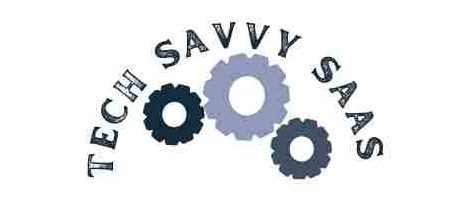Imagine a future where cities are powered by completely renewable energy, diseases are diagnosed and treated before they can cause any harm, and global communication barriers are a thing of the past. This isn’t a distant utopia; it’s rapidly becoming our reality thanks to emerging technologies and innovation.
The purpose of this blog post is to delve deep into the latest technologies that are pushing the boundaries of what’s possible and transforming our world in profound ways. For individuals and businesses alike, staying abreast of these developments is crucial to navigating the rapidly changing technological landscape.

How Are Emerging Technologies Revolutionizing Healthcare?
Artificial intelligence (AI) is reshaping healthcare by enhancing diagnostic accuracy and improving patient outcomes. Take, for example, IBM Watson. Studies have shown that Watson can diagnose cancer more accurately than many human physicians. One notable study from the University of North Carolina revealed that Watson was able to identify cancerous mutations and recommend treatments that were missed by clinicians in 30% of the cases.
Machine learning (ML), a subset of AI, is playing a pivotal role in predictive healthcare. By analyzing vast datasets, ML algorithms can predict patient risks for diseases and suggest preventive measures. This shift towards personalized medicine is profoundly impacting patient lives, as demonstrated by tools like Predictive Oncology’s Helomics platform, which uses AI to personalize cancer treatment plans by predicting individual responses to various therapies.
Gene Editing and CRISPR: What Are the Breakthroughs and Ethical Concerns?
CRISPR technology represents a significant leap in gene-editing capabilities. It allows scientists to edit parts of the genome by removing, adding, or altering sections of the DNA sequence. A landmark study published in “Nature” demonstrated CRISPR’s capability to correct a gene mutation responsible for Duchenne muscular dystrophy in dogs, a step towards possible therapeutic applications in humans.
However, the ethical implications of gene editing are profound. While CRISPR offers potential cures for many genetic diseases, it also poses ethical questions regarding genome editing in embryos and the potential for unintended consequences. The debate is ongoing, with experts from both the scientific and ethical fields weighing in through forums like the International Summit on Human Gene Editing.
Innovations in Energy: How Are Advances in Technology Paving the Way for a Sustainable Future?
The global push towards sustainable energy solutions has accelerated the development of advanced technologies in both solar power and nuclear fusion. As the world seeks to reduce carbon emissions and combat climate change, these technologies play a pivotal role in shaping a sustainable future.
What Are the Latest Advancements in Solar Panels and Energy Storage?
Advanced Solar Panels: Increasing Efficiency and Accessibility
The latest generation of solar panels represents a significant leap forward in photovoltaic technology. Recent advancements have focused on increasing the efficiency and reducing the cost of solar panels. For instance, researchers at the National Renewable Energy Laboratory (NREL) have developed a solar cell with a record-breaking efficiency of 47.1% under concentrated illumination. Such high efficiency helps in maximizing energy production even in smaller areas, making solar energy more viable in urban settings.
Energy Storage: The Key to Unlocking Solar Power’s Full Potential
Energy storage technologies, particularly lithium-ion batteries, have seen dramatic improvements in capacity and cost-effectiveness. According to the International Energy Agency (IEA), the global energy storage market is expected to grow by 13% annually, reaching 230 gigawatts (GW) by 2030. This growth is essential for managing the intermittent nature of solar power, ensuring that the energy produced during peak sun hours can be stored and used as needed.
Examples of global adoption include Germany’s push towards Energiewende, which integrates solar power with innovative storage solutions, and Australia’s significant investments in solar farms coupled with massive battery storage systems like the Hornsdale Power Reserve.
How is nuclear fusion positioned as a sustainable energy source?
Nuclear fusion, the process that powers our sun, involves merging atomic nuclei to release energy. Unlike nuclear fission, fusion promises a nearly limitless supply of energy with minimal radioactive waste, positioning it as a potential game-changer for the global energy landscape.
Recent Developments in Fusion Technology
One of the most significant projects in this arena is the International Thermonuclear Experimental Reactor (ITER) project in France. Designed to become the world’s largest magnetic confinement plasma physics experiment, ITER aims to demonstrate the feasibility of fusion as a large-scale and carbon-free source of energy. The project is an example of international cooperation, with 35 countries collaborating to harness fusion’s potential.
ITER is expected to begin full deuterium-tritium fusion experiments by 2035. Early tests have been promising, with several breakthroughs in plasma containment and stability technologies. Moreover, private companies like Commonwealth Fusion Systems and General Fusion are also making strides, with some aiming for functional commercial reactors as early as 2030.
What Are the Implications of These Energy Innovations?
The advancements in solar power and nuclear fusion not only hold promise for reducing global dependence on fossil fuels but also align closely with international goals for environmental sustainability. As these technologies continue to develop, they will play a crucial role in providing reliable, efficient, and clean energy, which is essential for supporting global economic growth and environmental health.
The Frontier of Computing: Quantum and Beyond
As we stand on the cusp of the next great era in computing, the development of quantum computing and the expansion of edge computing are setting the stage for profound changes across all sectors of the economy and society. These cutting-edge technologies promise to redefine the boundaries of data processing power and connectivity, ushering in new efficiencies and capabilities.
What Is Quantum Computing, and How Does It Enhance Computing Power?
Fundamentals of Quantum Computing
Quantum computing harnesses the phenomena of quantum mechanics to process information. Unlike classical computers, which use bits as the smallest unit of data (0 or 1), quantum computers use quantum bits, or qubits, which can represent and store information in both 0 and 1 simultaneously thanks to superposition. Additionally, through a phenomenon known as entanglement, qubits can become correlated with each other and act as if they are connected, which significantly increases the speed at which a quantum computer can solve certain problems.
Potential Applications of Quantum Computing
The power of quantum computing lies in its potential to solve complex problems that are beyond the reach of classical computers. For example:
- Cryptography: Quantum computers could potentially crack many of the cryptographic systems that protect our digital communications.
- Drug Discovery: By simulating molecular structures at an atomic level, quantum computing could revolutionize the speed and precision of drug development. Researchers at companies like Google and IBM are already exploring these applications.
- Financial Modeling: Quantum algorithms offer the potential to analyze financial data and optimize portfolios with unprecedented speed and accuracy.
- Artificial Intelligence: Quantum computing could dramatically speed up AI training and learning processes, enhancing AI’s ability to make complex decisions and analyze large volumes of data.
Recent advancements include Google’s claim of achieving “quantum supremacy” with their 54-qubit processor, Sycamore, which performed a specific calculation in 200 seconds that would take the most powerful supercomputers about 10,000 years to complete.
How does edge computing enhance connectivity and efficiency in data processing?
Definition and Advantages of Edge Computing
Edge computing refers to the practice of processing data near the edge of your network, where the data is being generated, instead of in a centralized data-processing warehouse. This approach minimizes latency, or delay, because data doesn’t have to travel over long distances.
Advantages of Edge Computing
- Reduced Latency: By processing data closer to the source, edge computing significantly reduces the time it takes for devices to make decisions and respond to conditions.
- Bandwidth Savings: Sending only necessary information to the cloud reduces the bandwidth required, which can be crucial in environments with limited connectivity.
- Increased Privacy and Security: Local data processing can help address privacy concerns by minimizing the amount of sensitive data transmitted.
Examples of Edge Computing in Action
- IoT Devices: In smart homes, edge computing allows devices like thermostats and security cameras to process data on the spot rather than relying on a central server. For example, the Nest thermostat uses local data to adjust heating and cooling in real-time.
- Manufacturing: Smart factories employ edge computing to monitor equipment performance and predict failures before they happen, thus optimizing maintenance schedules and reducing downtime.
- Healthcare: In hospitals, edge computing devices can monitor patient vital signs in real time, providing alerts for urgent medical attention if needed.
Transportation of Tomorrow: Smart and Autonomous
The advent of smart and autonomous transportation technologies is not just enhancing how we travel but is fundamentally reshaping our urban landscapes, societal norms, and economic models. This transformative journey includes the evolution from mere automotive prototypes to real-world testing of autonomous vehicles (AVs), as well as groundbreaking developments in high-speed travel solutions like the Hyperloop.
The Evolution of Autonomous Vehicles
The journey towards fully autonomous vehicles has been marked by significant milestones. From the early DARPA Challenges in the mid-2000s, which catalyzed innovations in self-driving technologies, to recent advancements by major tech and automotive companies, AVs have rapidly progressed. For instance, Waymo (formerly the Google self-driving car project) has now logged over 10 million miles in autonomous mode across various U.S. cities, demonstrating the practical viability of this technology.
Societal Impacts of Autonomous Vehicles
The integration of AVs into everyday life promises substantial changes.
- Safety: AVs are anticipated to dramatically reduce traffic accidents caused by human error. According to the National Highway Traffic Safety Administration (NHTSA), autonomous vehicles could eliminate 94% of crashes involving human mistakes.
- Efficiency: With capabilities such as platooning, AVs could reduce traffic congestion, lower fuel consumption, and decrease emissions. Research by the Texas A&M Transportation Institute suggests that traffic efficiency improvements could cut commute times by up to 40% in congested urban areas.
- Urban Design and Lifestyle: The widespread adoption of AVs could lead to redesigning city landscapes, reducing the need for parking spaces, and potentially transforming these areas into green spaces or new development zones.
What Is Hyperloop Technology, and How Could It Revolutionize High-Speed Travel?
Hyperloop involves propelling pods through low-pressure tubes at speeds exceeding traditional rail and most commercial air travel, potentially reaching up to 700 miles per hour. This concept, popularized by Elon Musk, leverages magnetic levitation and vacuum technology to minimize air resistance and friction.
Current developments in hyperloop technology
Several companies, including Virgin Hyperloop One, are leading the charge in bringing Hyperloop to reality:
- Virgin Hyperloop One has successfully conducted tests in Nevada, where its XP-1 pod reached speeds of 240 mph in a 500-meter tube.
- Global Projects: There are proposals and feasibility studies for hyperloop routes in several regions, including the Midwest, connecting Chicago to Pittsburgh, and in India, from Mumbai to Pune.
Potential Impacts of Hyperloop Technology
The implementation of Hyperloop technology could usher in a new era of high-speed travel with several benefits:
- Speed and Efficiency: Hyperloop aims to reduce travel times between major cities from hours to minutes, significantly impacting business commutes and regional economies.
- Environmental Sustainability: As hyperloop systems are projected to be powered by renewable energy, they could offer a sustainable alternative to fossil-fuel-dependent air and road travel.
- Economic Opportunities: By connecting distant cities as if they were metro stops, Hyperloop could enhance economic integration and equalize opportunities across regions.
Ethical and Societal Implications of Emerging Technologies
As emerging technologies such as artificial intelligence (AI) and automation continue to evolve, they bring with them a host of ethical and societal implications that must be carefully managed. From concerns over data privacy and security to the impact on employment, the integration of these technologies into our daily lives and the global economy raises critical issues that require a thoughtful and inclusive approach.
What Are the Data Privacy Challenges in Our Increasingly Digital World?
The Growing Concerns Over Data Privacy
In our digital age, data breaches have become both more frequent and more severe, affecting millions of individuals worldwide. For example, the 2017 Equifax breach compromised the personal information of approximately 147 million people, underscoring the vulnerability of personal data and the catastrophic consequences of such events.
Examples of Data Breaches and the Need for Robust Security Measures
- Equifax Breach: Hackers accessed sensitive information, including SSNs and birth dates, highlighting the need for stronger security protocols.
- Facebook-Cambridge Analytica Scandal: The data of about 87 million Facebook users was improperly shared, illustrating the risks of data mishandling and the need for greater transparency and accountability.
Maintaining Individual Rights Amid Technological Advances
As technology advances, the ethical imperative to protect individual rights becomes more crucial. This includes ensuring robust data protection laws and frameworks are in place, such as the General Data Protection Regulation (GDPR) in the European Union, which aims to give individuals control over their personal data and to simplify the regulatory environment for international business.
How Is Automation Impacting Employment, and What Are the Societal Implications?
Reshaping Job Markets Through Automation and AI
Automation and AI are transforming job markets, leading to both displacement and the creation of new job opportunities. According to a report by McKinsey, up to 30% of global workers could be displaced by 2030 due to automation, but this technology also has the potential to create new jobs and increase productivity in various sectors.
Risks and Possibilities Brought by Automation
- Job Displacement: Roles in manufacturing and data entry are highly susceptible to automation.
- Creation of New Jobs: Areas such as AI development, robotics maintenance, and data analysis are seeing growing demand.
Insights into Societal Adaptation
To mitigate the impacts of automation on employment, there is a need for comprehensive strategies that include:
- Education and Retraining Programs: Governments and corporations can play a pivotal role in providing education and training programs to prepare workers for the shift in job demands.
- Inclusivity in Tech Development: Ensuring that the benefits of AI and automation are distributed widely requires policies that promote inclusivity and equitable access to technology.
Key Takeaway: Harnessing Transformative Technologies for a Sustainable and Ethical Future
As we explore the vast landscape of emerging technologies, it becomes clear that certain innovations stand out for their potential to profoundly reshape industries and societal norms. Among these, quantum computing and renewable energy technologies like advanced solar panels and nuclear fusion are particularly transformative. Here are some actionable tips on how individuals and businesses can leverage this knowledge:
Quick Tips for Individuals:
- Stay Informed: Regularly update yourself on the latest advancements in quantum computing and renewable energy through credible sources.
- Invest in Green Technology: Consider investing in renewable energy solutions for your home, such as solar panels, which are becoming more efficient and affordable.
- Develop Relevant Skills: As quantum computing grows, acquiring skills in quantum algorithms and programming could position you favorably for future job opportunities.
- Advocate for Ethical Technology Use: Engage in community and online forums to advocate for the responsible and ethical use of emerging technologies.
Quick Tips for Businesses:
- Incorporate Sustainable Practices: Evaluate how integrating renewable energy sources could reduce operational costs and enhance brand reputation for sustainability.
- Innovation through Quantum Computing: Explore how quantum computing could solve complex problems specific to your industry, such as optimization challenges or material science innovations.
- Prepare the Workforce: Invest in training programs to prepare your workforce for the transition towards automation and high-tech tools.
- Ethical Leadership: Develop a framework for ethical decision-making in the use of AI and automation, ensuring that your business practices align with societal values.
Conclusion
The journey through emerging technologies reveals a compelling narrative of advancement and challenge. Quantum computing, renewable energy technologies, and AI are not just reshaping our industrial landscape; they are redefining the very fabric of society. These technologies offer unprecedented opportunities to enhance efficiency, solve age-old problems, and reduce our ecological footprint.
However, as we harness these powerful tools, the importance of maintaining a balanced approach with strong ethical considerations and active public engagement cannot be overstated. These are essential to ensuring that the benefits of new technologies are shared broadly across society.
Everyone has a role to play in shaping a responsible future. Whether you are a consumer, business leader, policymaker, or student, your engagement and decisions matter. As we stand on the brink of what could be the next great era of human achievement, it is critical to foster a culture of responsibility and inclusivity. Let’s work together to ensure that these technologies not only propel us towards a brighter future but also preserve and enhance our shared human values.
The future beckons with promise and potential—it is up to us to respond with foresight, wisdom, and an unwavering commitment to ethical progress.
More Post






